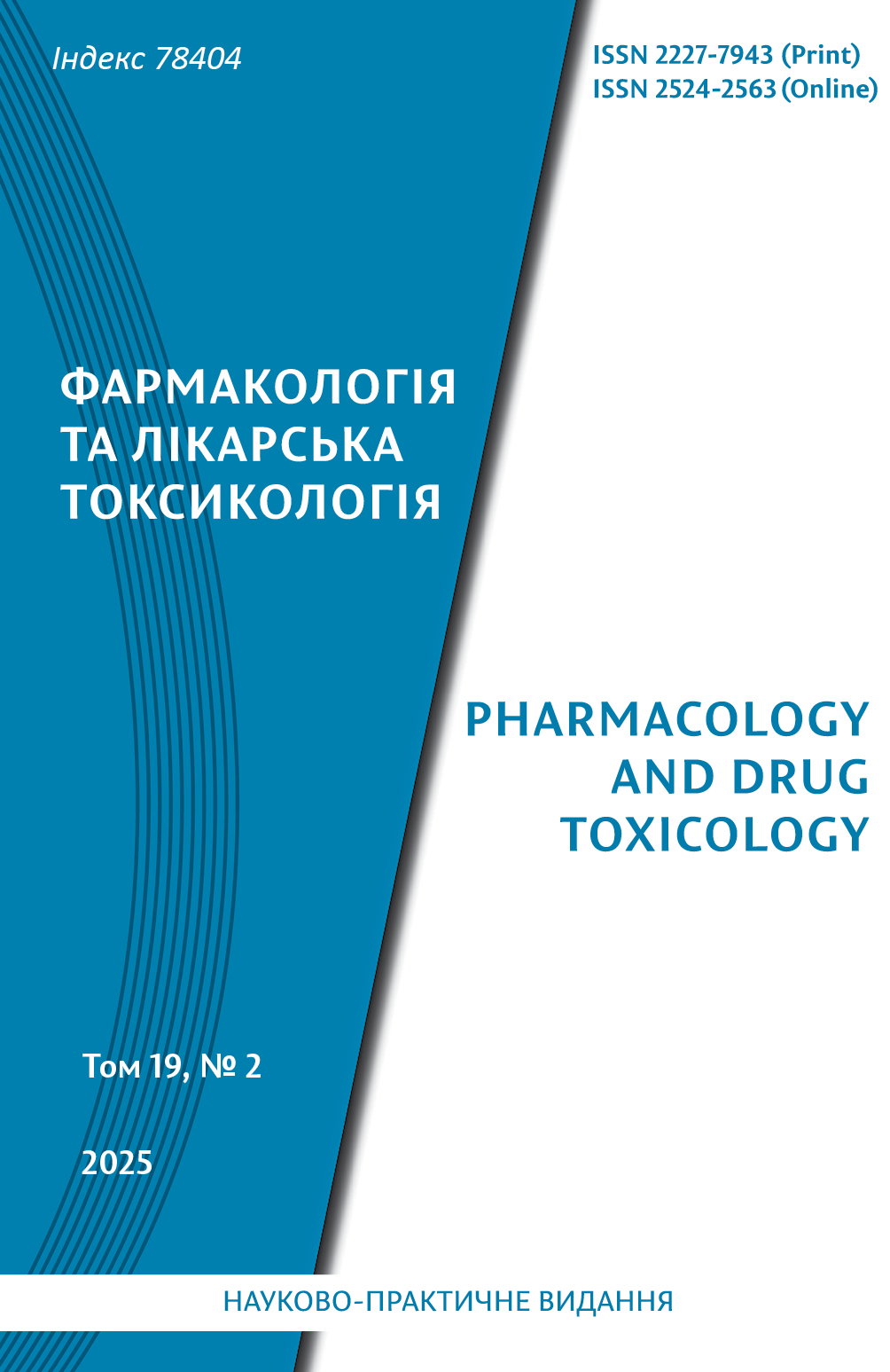Abstract
Despite the active development and implementation of new pharmacocorrection agents, refractory
epilepsy remains an urgent medical and social problem worldwide. One of the promising ways to treat
refractory epilepsy is to use, in addition to classical first-line antiepileptic drugs (AEDs), medicines from
other pharmacological groups – so-called «non-antiepileptic» drugs. One of such potential non-antiepi
leptic adjuvants can be considered montelukast an antiallergic drug from the group of leukotriene recep
tor blockers, for which per se anticonvulsant properties have been established previously. At the same
time, the question of the ability of montelukast to modulate the anticonvulsant potential of classical AEDs,
ensuring their effectiveness in cases of refractory epilepsy, remains open.
The aim of the study is to clarify the effect of montelukast on the anticonvulsant potential of classical
commonly used AEDs: sodium valproate and carbamazepine.
The study was performed on a basic model of acute primary generalized pentylenetetrazole-induced
seizures in mice. Classical AEDs were administered intragastrically to animals at ED50
and ½ ED50 30 min before the convulsant agent: sodium valproate – at doses of 300 and 150 mg/kg, carbamazepine – at
doses of 100 and 50 mg/kg; montelukast was administered at a previously determined effective anticon
vulsant dose of 4 mg/kg. Mice in the control group (untreated seizures) received distilled water in a similar
(0.1 ml/10 g of weight) and administration regimen volume. Pentylenetetrazole was administered at a dose
of 80 mg/kg subcutaneously. The following indicators were evaluated in animals: the latency period of the
first attack, the number of seizures and their nature, the severity of convulsions, the total duration of the
convulsive period, survival time until death, and the overall lethality rate.
It was found that the combination of montelukast with sodium valproate at ½ ED50
provided a pro
nounced protective effect on the pentylenetetrazole-induced seizure model, which was determined by a
statistically significant increase in the latency period of the first seizures compared to control, as well as a
decrease in the number of paroxysms per 1 mouse, the duration of the seizure period and tendency to
reduce the severity of seizures. It is also important that the combined use of montelukast with valproate
contributed to a more pronounced reduction in lethality. Montelukast also favorably modulated the effect
of carbamazepine at ½ ED50: such a combination not only caused a statistically significant reduction in
animal lethality compared to control, but also significantly reduced the duration of the seizure period com
pared to carbamazepine per se. In addition, a statistically significant increase in the latency period of the
first seizure was observed under the combination of montelukast with carbamazepine compared to the
control, as well as a significant decrease in the number of clonic-tonic paroxysms per mouse.
Thus, in the model of acute pentylenetetrazole-induced seizures, it was established that montelukast
can enhance the anticonvulsant potential of sodium valproate and carbamazepine in subeffective doses.
The results obtained provide grounds for continuing the study of montelukast as an effective adjuvant to
anticonvulsants in the treatment of epilepsy
